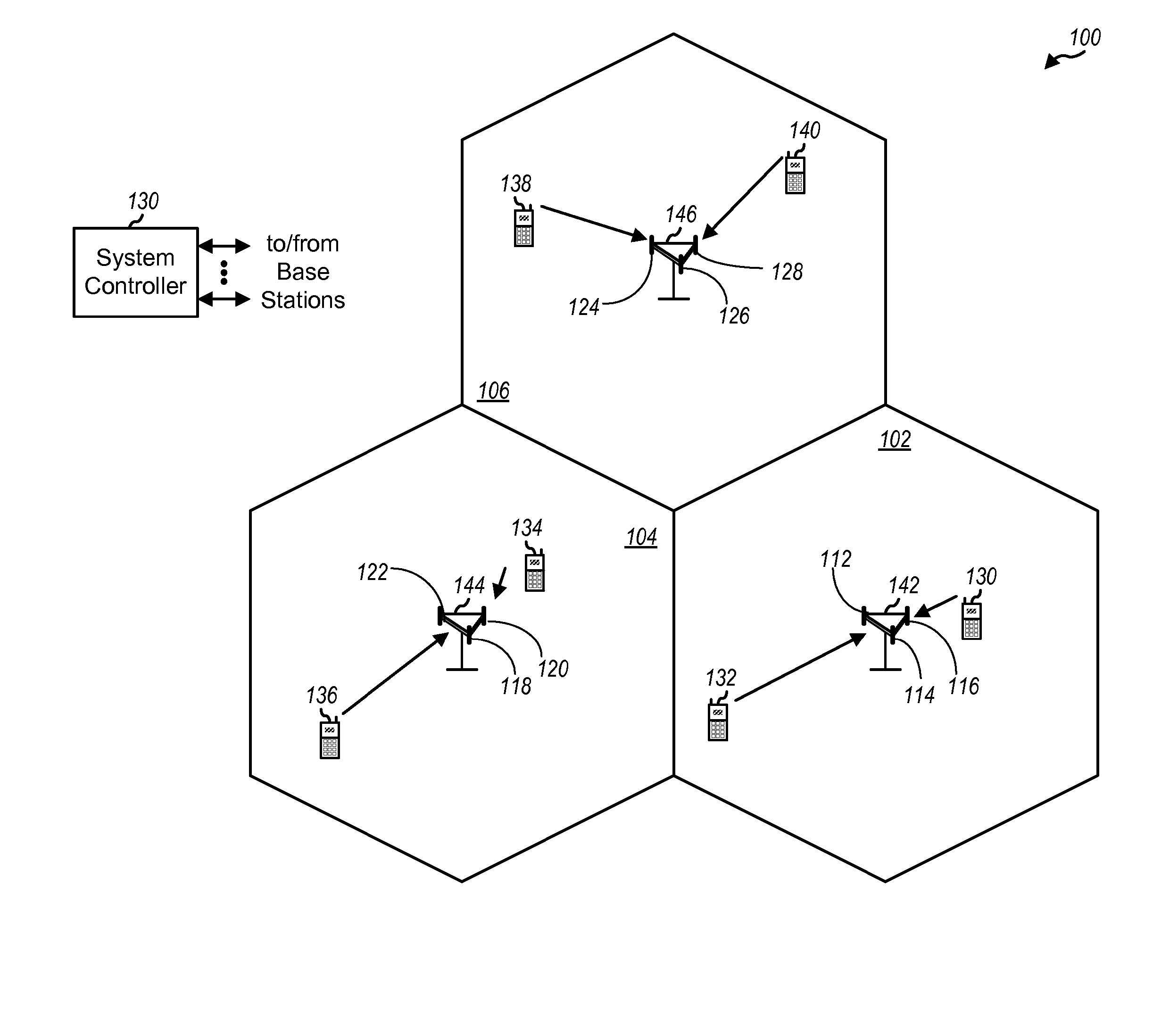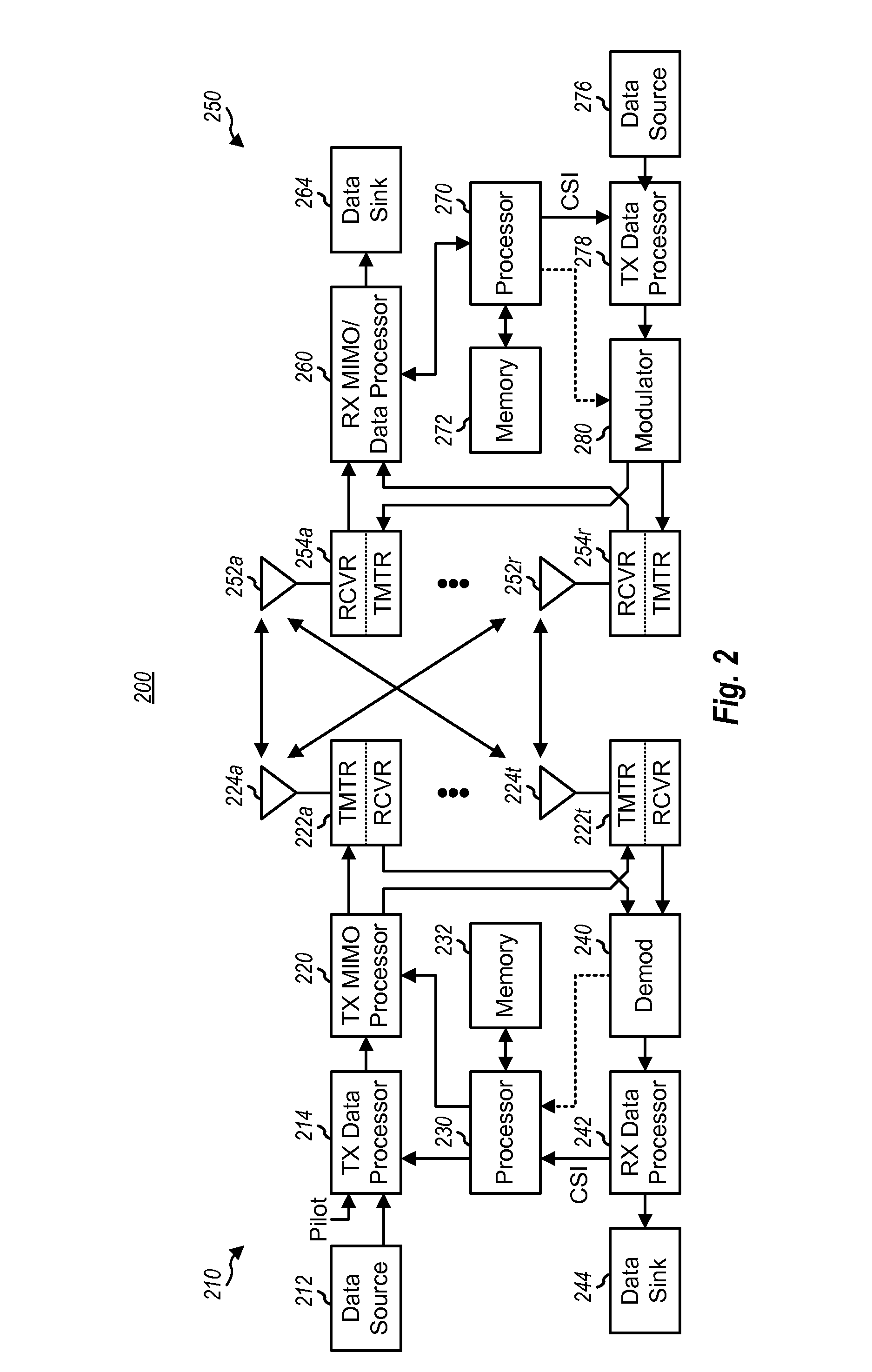Orthogonal resource reuse with SDMA beams
a technology of sdma beams and beams, applied in the field of wireless communication, can solve the problems of weak coverage area between beams, limiting the ability of a system to provide reliable service, and sdma systems utilizing beamformed or otherwise directional antennas may suffer
- Summary
- Abstract
- Description
- Claims
- Application Information
AI Technical Summary
Benefits of technology
Problems solved by technology
Method used
Image
Examples
Embodiment Construction
[0029] A wireless communication system can implement SDMA by providing multiple antenna beams positioned to support a predetermined coverage area. The communication system can implement the antenna beams as multiple directional antennas, beamformed or beamsteered antennas, and the like, or a combination thereof. The multiple antenna beams can be configured to support a predetermined coverage area. The predetermined coverage area can be substantially omni-directional, or can be limited, such as a sector of a coverage area that is modeled as being circular or hexagonal.
[0030] Each of the multiple beams can support a substantially independent area within the predetermined coverage area. Furthermore, the beams can be associated with beam sets, where each beam set supports the predetermined coverage area. The beams of a beam set are substantially non-overlapping, such that transmissions in one beam do not substantially contribute to interference in an adjacent beam of the same beam set....
PUM
 Login to View More
Login to View More Abstract
Description
Claims
Application Information
 Login to View More
Login to View More - R&D
- Intellectual Property
- Life Sciences
- Materials
- Tech Scout
- Unparalleled Data Quality
- Higher Quality Content
- 60% Fewer Hallucinations
Browse by: Latest US Patents, China's latest patents, Technical Efficacy Thesaurus, Application Domain, Technology Topic, Popular Technical Reports.
© 2025 PatSnap. All rights reserved.Legal|Privacy policy|Modern Slavery Act Transparency Statement|Sitemap|About US| Contact US: help@patsnap.com



